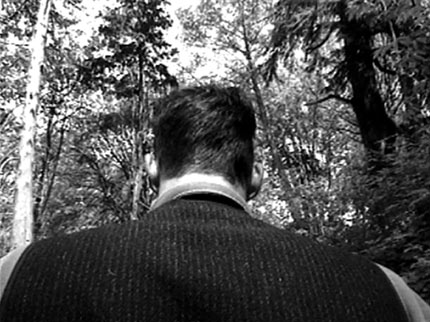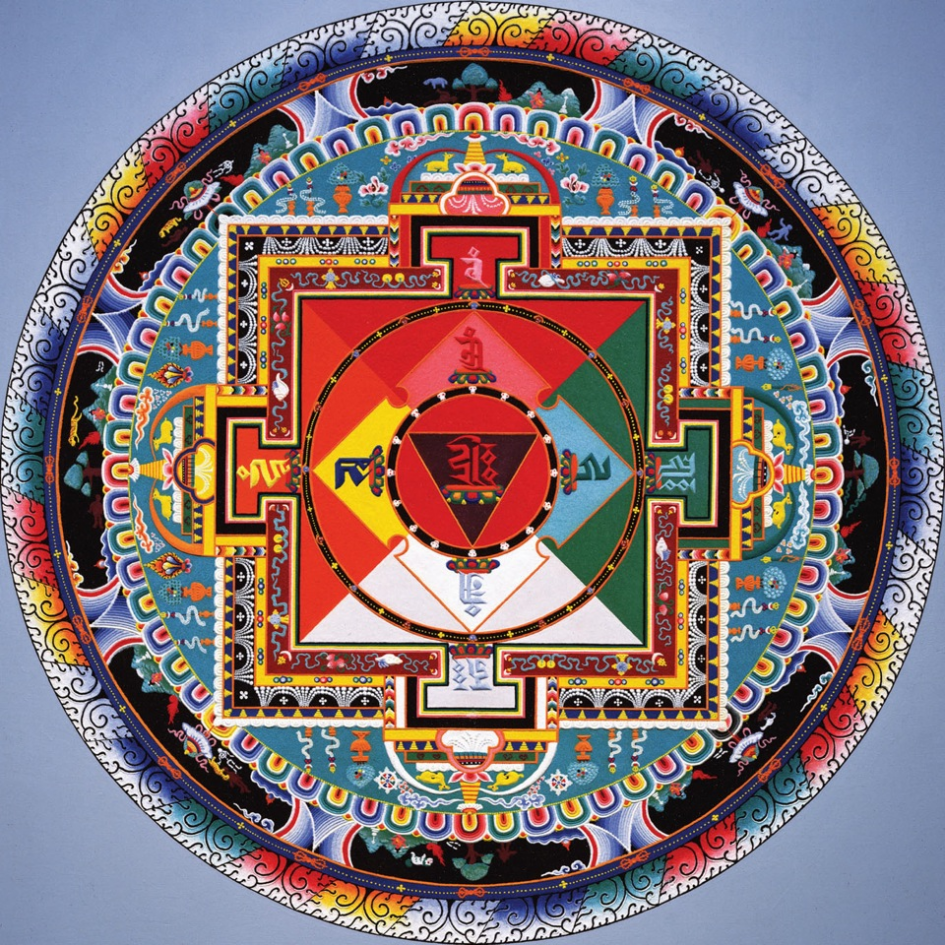from Artist site:
Clover consists of four 20-inch black-and-white monitor tubes mounted on the four edges of an open steel platform measuring 50 h. x 30 x 30 inches (127 x 76 x 76 cm.). The tubes have been removed from their chassis, allowing for their tapered bulbs to be directed towards a center point in a clover-like form. Each image is of a man seen from behind, recorded with a camera that is attached on a brace out from his back. The image consists of his shoulders and head, around which can be seen a wooded background marked with trees, that continuously moves toward the viewer. The men appear to be moving toward a common ground; however, we notice that each man, is a part of the seeing apparatus, and thus ceases to move as the world passes by.
Dong’s Perspective:
In my perspective, as he uses four screens to make his whole vision focus in the center of the tube, it was like the shape of clover—four leaves supported by one stem. He probably wanted to express the way he thinks of himself, his life moves forward but always towards one point.
Amber’s Perspective:
The four TV screens disconnected from their outer cases mounted in North, South, East and West oritentaions, in the shape of a four leaf clover, each screen shows a man walking through the woods. The perspective is as if we are following them, stalking them almost, they like are prey but inaccessible. I am aware that I am interpreting meaning from their pace. One man seems to be hastily moving toward a goal, another seems to be meandering, thinking inwardly. The other two, it’s more difficult to tell. Maybe I can more easily give interpretation to the movements I understand, the movements that I affect when I’m in those moods. The forest sounds of branches breaking and airplane noise overhead comes from one central speaker. It location give us the perception these men are in the same place, walking together but apart and perceiving the world all quite differently.
In Buddhism the mandala represents the cosmos, or a microcosm of the universe that exists within man. The traditional Tibetan mandalas are square with a circle in the center, this orientation is mirrored in Clover. The four monitors face outward creating the four gates and the speakers placed centrally evoke the circle shape. The artists friends, George Quasha (poet/artist) and Charles Stein (poet) noted the mandala-like nature of the piece; “We re-project the four path/leaves of clover pointing inward toward an unknown center”. On each screen there is a man walking away from the viewer, each screen representing a different path to the same center. Carl Jung made use of the mandala in his work in psychology and in his art making noting the designs simplistic applicability to life, “Only gradually did I discover what the mandala really is, the Self, the wholeness of the personality”. Clover then could be seen as an appropriation of the mandala motif wherein each monitor reflects a path toward the same center.









Leave a Reply